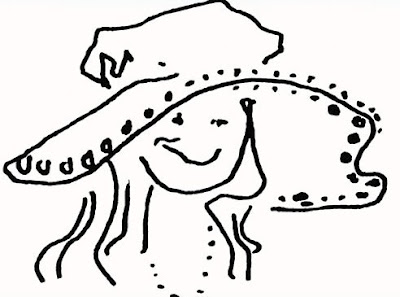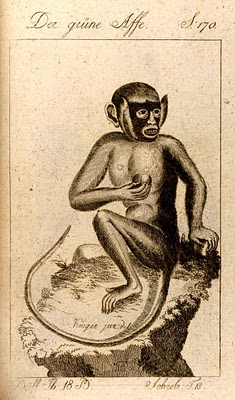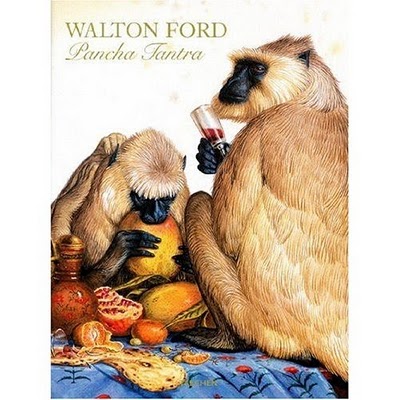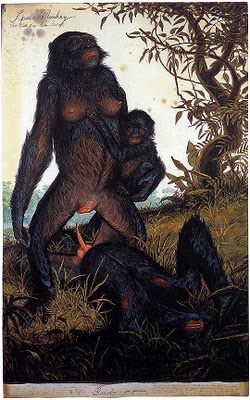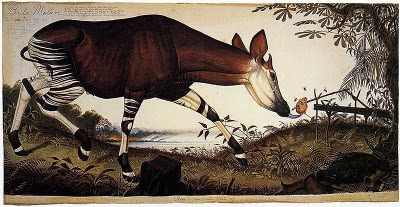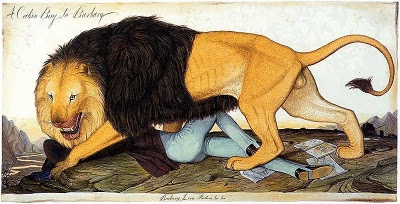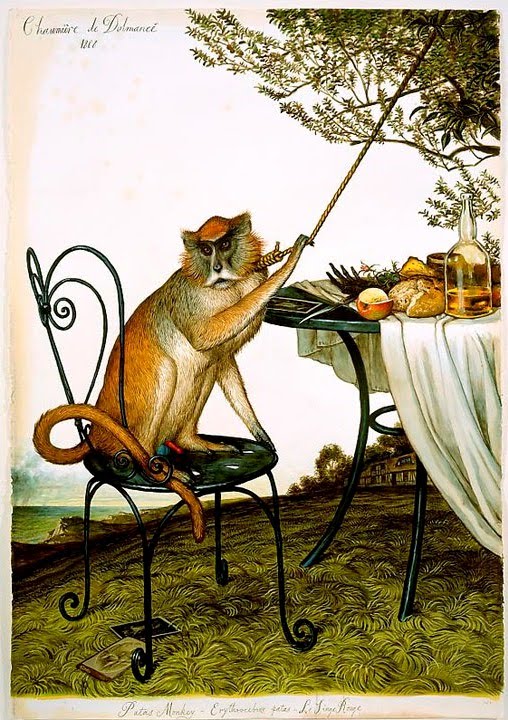 Robert Crumb’s Self-portrait
Robert Crumb’s Self-portrait
 Walt Kelly
Walt Kelly
 Popeye, The Sailor(1933)
Popeye, The Sailor(1933)
 Uncle Scrooge
Uncle Scrooge
 Harvey Kurtzman’s comic
Harvey Kurtzman’s comic
Sometimes it’s hard to believe that Robert Crumb, being as irreverent as he is, made his first sketches imitating the candid contours taken from animated characters created by E. C. Seglar (Popeye), Walt Kelly (Pogo), Carl Barks (Donald Duck) and many more artists from the same batch. What better source for a young boy, whose only amusement and motivation relies on comic books and nothing else?
 Crumb brothers
Crumb brothers
This delight was fomented by Robert Crumb’s older brother, Charles. But it was Robert, who, on a most uncommon occasion, asserted his authority on Charles and pressed him to point toward a new direction. Eventually, Robert, Charles and Maxon (the younger brother who is also a talented illustrator) drew scenes from Treasure Island by Robert Louis Stevenson. The Crumb brothers’ newly created version of the novel was presented to the rest of “Crumb Comic Company” members: Carol and Sandy; their sisters. Those times would be joyous for the party of five; the sons and daughters of Charles Vincent, their draconian U.S. Marine and Beatrice, their ultra-catholic mother with family ties to Andrew Jackson.
 Girl Standing at the Window (1925), Salvador Dalí
Girl Standing at the Window (1925), Salvador Dalí
 Young Virgin Auto-Sodomized by the Horns of Her Own Chastity (1954), Dalí
Young Virgin Auto-Sodomized by the Horns of Her Own Chastity (1954), Dalí

Robert Crumb was born on August 30, 1943, in Philadelphia, the city where America declared its independence from the English crown and fittingly, Robert declared his own independence as soon as he could. At an early age he liberated himself from the religious beliefs and severe discipline that would be a spanner in his childhood works. Crumb did serve in the Army, though little of that time is worth noting.
Crumb’s personal and artistic transcendence occurred when he was still very much an introverted and shy boy. But like Stevenson’s Doctor Jekyll and Mr. Hyde, young Robert turned into a fearless ‘monster’ while he was drawing. That peculiar hormonal boiling, felt by every adolescent, ran alongside society’s collective interest in sex which was in the air at that time. 1955’s Kinsey Report and the debut of Playboy magazine with Marilyn Monroe on the cover and centerfold in 1953 literally thrust the topic of sex squarely in the public eye.
There are some critics who have vehemently compared him with the great satirists François Rabelais, Jonathan Swift and Mark Twain. The fact is, nobody can be indifferent in front of a Crumb drawing (you love it or you hate it). Due to the polarized reception of his work, he has been wrongly accused by some of misogyny, meanness and downright immaturity. That lack of understanding is actually due to the overwhelming honesty expressed in his drawings. For someone with a narrow, square mind it might be uncomfortable or difficult to digest Mr. Crumb’s autobiographic Epicureanism, as it is rife with explicit sexual connotations. As for subjects, style and generation, he is closer to Henry Miller, Céline, Norman Mailer and Charles Bukowski (who Crumb would later collaborate with). To a man, none of the aforementioned has been known to be interested in pleasing well-mannered crowds or being politically corrects.

In his youth, Crumb often showed his classmates the comics he was doing. In one of those panels was the prototype of what later became the milestone character from the crumbianesque iconography: Fritz the Cat. (Initially titled Fred the Cat.) He kept the idea in the inkwell until 1965, when he decided to publish it in Help!, a magazine by James Warren. A year before, Crumb illustrated his Big Yum Yum Book, which he drew in 1963 and which was finished the year he met Dana, his first wife.
Help! showcased several artists whose works were part of the counter-culture movement of the comic underground: Skip Williamson, Gilbert Shelton and Jay Lynch. Along with Crumb they would quake the foundations of comics, a land heretofore strictly reserved to children and teen readers but not anymore. Before Help! Crumb launched Foo, a humorous fanzine inspired by Mad. As a staunch follower of Harvey Kurtzman, illustrator and director of Mad, Crumb concocted a plan to get an interview with Kurtzman, who was impressed enough that he employed him at the subversively juvenile magazine.


 Mr. Natural
Mr. Natural
In 1967 he moved to the hippie movement epicenter, San Francisco, where Mr. Natural was born. Philadelphia’s Yarrowstalks had provided the fertile ground from which would spring, Mr. Natural. Throughout this period, Crumb tried hard to be hip; he wanted to enjoy free love, but alas, he couldn´t get laid. He claimed he didn’t fit in because he looked like a cop from the “vice squad.” Janis Joplin (by this time, he had drawn the artwork for Big Brother and The Holding Company’s Cheap Thrills album cover) once asked him: “Crumb, what’s the matter, don’t you like girls?” She advised him to get with the program; grow his hair long, wear billowy shirts, satin jackets and platform shoes but Crumb, an iconoclast, refused to wear the fashions of the day.

Although he eschewed the trappings of hippiedom, Crumb experimented heavily with LSD. It was while he was having a “bad trip” in 1965 or 1966 thereabouts, that Robert Crumb’s style of drawing changed radically. He began sketching characters that were more cartoonish, wearing high-heel shoes and images he never drew before. Crumb’s comic artwork started to elicit harsh commentary. Numerous critics cited his pictures of overly sexualized women, often in subservient roles, calling him “the chief sexist of underground comics”. It could be said that on one hand, due to the LSD, he lost consistency but, on the other hand, he was able to create comics thoughtlessly. He didn’t give a damn if they were silly. He only cared about his sordid epiphany and those ideas were immediately accepted. Psychedelic and hippie aesthetic were in bloom all around Fog City.


 And talking about shoes, in 2009 Crumb collaborated with a collection for Vans. Model Sk8 Hi (Mr. Natural‘s artwork featured on both the upper and the sole) and Slip-on (Fritz the Cat art extended all over the upper)
And talking about shoes, in 2009 Crumb collaborated with a collection for Vans. Model Sk8 Hi (Mr. Natural‘s artwork featured on both the upper and the sole) and Slip-on (Fritz the Cat art extended all over the upper)
Despite the smashing success of the film and the societal borders it overstepped (it was the first “X Rated” animated movie), Crumb loathed the cinematographic adaptation of Fritz the Cat (1972), directed by Ralph Bakshi. During the seventies Crumb and his second wife, Aline Kominsky, lived in isolation on a farm far from the city. Aline shared his passion for illustration. During this time, somewhat surprisingly to those who didn’t know him, Crumb opted not to design a sleeve for The Rolling Stones. He was developing an autobiographic comic book based on his troubles with women. He admitted cynically that those troubles finished when he finally achieved his fame.
Robert Crumb is a famous, if compulsive, collector of early blues recordings and he founded his own old-timey revival band, R. Crumb and His Cheap Suits Serenaders in which he plays the banjo. Serendipitously, thanks to his addiction to old recordings, Crumb would meet Harvey Pekar at a record shop. Together, they would create the epic comic book American Splendor (1976) with Pekar writing the text and Crumb illustrating the panels.
In March 1981, Crumb created the comics anthology, Weirdo. After only ten issues, Crumb handed over the direction of the magazine to Peter Bagge who had approached him with the same youthful exuberance which Crumb had exhibited when he met Kurtzman at Mad. After 17 issues, the editorial reins went to Crumb’s wife, cartoonist Aline Kominsky-Crumb (except for issue #25, which was again edited by Bagge). The three editorial tenures were known respectively as Personal Confessions, the Coming of the Bad Boys, and the Twisted Sisters.
In 1993, Crumb and Aline settled down in a small village near Sauve, in the south of France. It was there that Terry Zwigoff went looking for Mr. Natural’s author to get permission for Zwigoff to do a documentary about his life and work, simply titled Crumb (1994). The film was critically acclaimed, winning the Grand Jury Prize for documentary at 1995’s Sundance festival, Best Documentary 1995 by the National Board of Review and many other awards for non-fiction and documentary films. Zwigoff would continue to pay homage to Crumb in Ghost World (2000), his adaptation of Daniel Clowes’ eponymous graphic novel. Zwigoff added a character into the plot: Seymour, a blues music collector performed by Steve Buscemi.
Crumb-Kominsy couple conceived an “editorial child”, Self-Loathing Comics. It is, as the name suggests, a dark humor series about their experiences in the French village where they live.
In 2012 Crumb appeared on 5 episodes of John’s Old Time Radio Show where he talked about old music, sex, aliens, Bigfoot and played 78rpm records from his record room in Southern France.
Although Robert Crumb is not publishing as often as he used to, whenever he does it, he never disappoints the gourmands of Made in USA comics.







English grammar corrections by Paul Klees
 David Zane Mairowitz and Robert Crumb
David Zane Mairowitz and Robert Crumb




















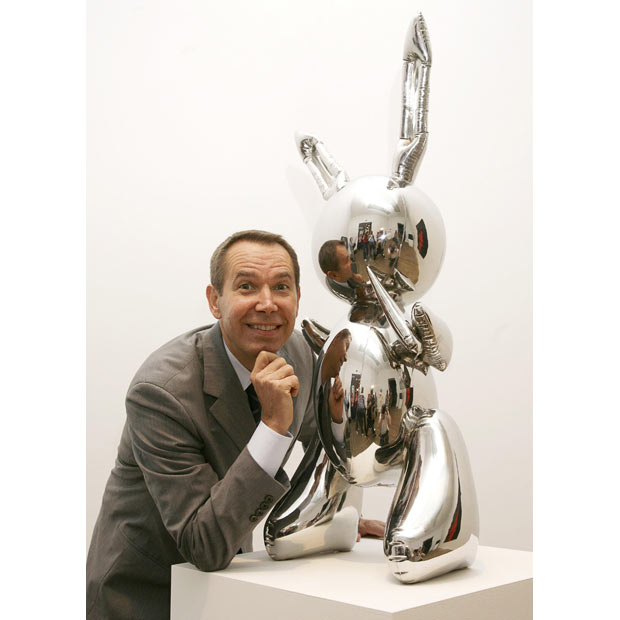

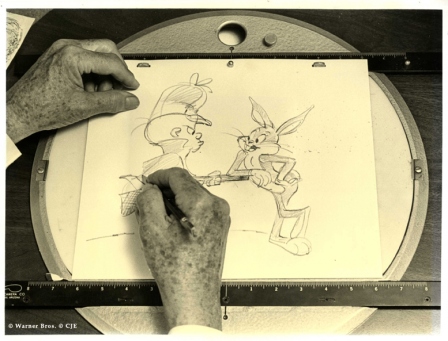

 Chuck Jones and Bugs Bunny
Chuck Jones and Bugs Bunny





























